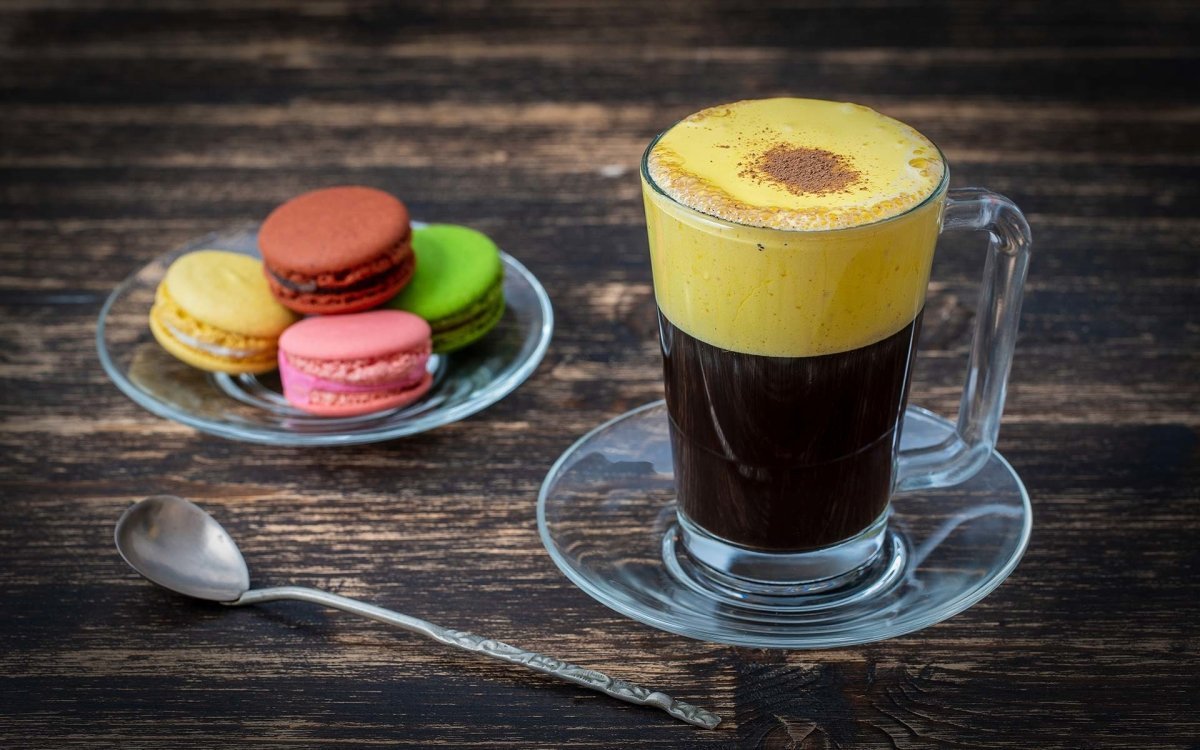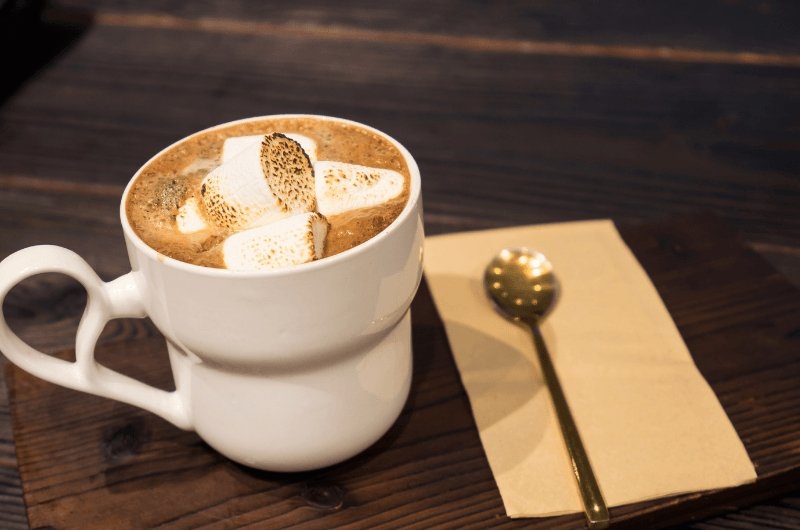Most of us might not have pleasant thoughts about coffee and eggs going together. After all, the two are incredibly different ingredients with tastes that don’t seem to match. However, a single sip of Vietnamese egg coffee is enough to prove you wrong. The strong flavor of coffee and the light and airy flavors of egg yolk foam might seem to be polar opposites. However, it is the mixture of these ingredients that make egg coffee such a delicacy. Unlike your average coffee, the Vietnamese egg coffee is more on the sweeter side, almost being like a tiramisu, thanks to its silky smooth yet viscous tendency. Simply reading about the taste, smell, and texture of egg coffee might be enough to water some mouths. However, before you replace your everyday morning coffee with Vietnamese egg coffee, make sure to learn more about it. After all, you can’t perfect the drink without understanding what it really is. So, continue reading below for this purpose.
What is Vietnamese egg coffee?
As the name suggests, Vietnamese egg coffee is a drink prepared with egg yolks, Robusta coffee, sugar, and condensed milk. The egg yolks are whipped and combined with sugar and milk before being boiled and poured on top of traditional coffee, forming a rich, fragrant foam. Unlike traditional coffee, egg coffee has a thick texture, especially due to the use of egg yolks and condensed milk. You can imagine it to be a dessert in the form of a drink. Some may think of it to have a custard-like texture due to its viscosity; however, that’s not the case. The egg coffee is quite fluffy and light despite the use of egg yolks and condensed milk.
Regarding the taste of egg coffee, it is a blend of two opposites, in particular, the sweetness of the egg foam and the intense flavor of Robusta coffee. While the egg yolk and condensed milk provide the drink with a creamier side, the Robusta coffee adds to its nutty, energetic, and bitter flavor, which compliments the overall taste. Unlike typical coffee beans, Robusta contains 265mg of caffeine per 8oz cup, making it incredibly strong in taste and aroma. As a result, the Vietnamese egg coffee is perfect for those who want an energy drink that’s not too bitter and provides a dessert-like taste.
History of Vietnamese egg coffee
In 1946, during the French war in the Hanoi region of Vietnam, basic food supplies became quite rare to find due to their scarcity. As a result, the Sofitel Legend Metropole Hotel, which was responsible for making simple Vietnamese coffee, soon ran out of milk. In these trying times, the scarcity of milk caused a bartender known as Nguyen Giang to improvise and create the same creamy coffee by substituting frothed egg yolks. As a result, Giang was not only able to solve the issue of a lack of coffee but also ended up creating a new type of coffee which turned out to be a hit.
Soon, seeing the success of his creation, Giang opened up the Giang café and started selling cà phê trứng (egg coffee), which is still sold to this day at the same place. However, the café is now more popular than ever thanks to the increasing popularity of Vietnamese egg coffee. If you want to try out the original egg coffee, make sure to head to the Hanoi region in Vietnam.
Variations of Vietnamese egg coffee
Vietnam is not the only country to make coffee using eggs. In fact, there are several areas that have used the same approach. However, each one has led to a different type of egg coffee with its own unique flavor. Here are some of such variations of Vietnamese egg coffee.
Swedish egg coffee
The Swedish egg coffee is a variation of Vietnamese egg coffee; however, it’s quite different in its use of the egg. Instead of using it as a substitute for milk, the eggs are used to smoothen and clarify the coffee. The egg is mixed with the coffee grounds in about ¼ cups of water and then boiled like a normal cup of coffee. In the end, the eggs are strained out, and the result is a mild and smooth cup of coffee.
The Swedish egg coffee has a rich and interesting historical background. Similar to Vietnamese egg coffee, it was also created in times of need. When expensive coffee grounds were being recycled countless times, eggs were added to coffee to improve the taste of low-quality coffee grounds.
Kopi Telur
Originating from Sumatra in Indonesia, Kopi Telur is another variation of Vietnamese egg coffee. Compared with Vietnamese egg coffee, Kopi Telur is even sweeter and provides a great kick of caffeine for anyone who wants to be energized. Its sweetness is particularly due to the use of honey on top of the egg yolk. On the other hand, the strong caffeine flavor is derived from the use of Sumatran coffee grounds.
While Vietnamese egg coffee typically only has two layers, Kopi Telur is known to have several. The layers consist of a foamy mixture of egg yolks and condensed milk, honey, and coffee. As a result, Kopi Telur is served in tall glass and is quite aesthetically pleasing.
Primal egg yolk coffee
Primal egg yolk coffee is an American variation of Vietnamese egg coffee. It’s quite simple to make, as it only requires one to blend coffee grounds and egg yolks together before boiling. But what’s best about the primal egg yolk coffee is that it is customizable.
According to your taste, you can add several ingredients to make the coffee taste exactly as you want. For instance, you can add butter or coconut oil to smoothen the coffee. It’s also a good idea to use spices such as turmeric and cinnamon on top of the frothy egg yolk foam that sits on top of the coffee.
How to make Vietnamese egg coffee
What you’ll need:
-
Phin filter
-
Electric mixer
Ingredients
-
2 large egg yolks
-
½ cup sweetened condensed milk
-
1 teaspoon pure vanilla extract
-
2 ounces of finely ground Robusta coffee (or GothRider Gasoline Coffee)
-
4 1/8 cups of hot water
-
Cocoa powder as an optional ingredient

Start making the egg foam.
The first step to making a delicious cup of Vietnamese egg coffee is to make its signature egg foam. So, gather the ingredients and start pouring the condensed milk, egg yolks, and vanilla into the electric mixer. Then you can start to mix the ingredients on high speed for around 10 minutes. The end result will be almost like that of cake batter; however, it should not be too frothy. To ensure the foam is of the right texture and consistency, test it by placing some on water. If the foam floats, it’s right on the spot, but if it doesn’t, then you might need to whip it some more.
Bloom coffee
Once you’ve made the egg foam, you can move over to making the coffee. Start off by heating the water to 96C or 205F, then add your coffee grounds to the Phin filter, keeping its plate underneath. Make sure to shake the filter to allow the grounds to spread evenly before you press them. Once you’ve done so, it’s time to bloom the coffee. To do so, place the Phin filter and plate on top of your cup and pour about a tablespoon of boiling water on the gravity press, leaving the coffee to bloom for 40 seconds.
Brew the coffee
To brew the coffee, simply pour hot water on top of the Phin filter and place the lid on it until your coffee has finished brewing. Typically, the Phin takes around 5 minutes to finish dripping. Check after five minutes and remove the filter if your coffee has been brewed.
Add the egg foam
Once you’ve brewed the coffee and made the egg foam, it’s time to combine the two and prepare yourself a warm cup of Vietnamese egg coffee. To do so, all you need to do is remove the Phin filter and add the foam according to your needs on each cup of coffee.
FAQs
What is a Phin filter?
In simple words, the Phin filter is a combination of the pour-over and the French press. However, in terms of brewing, the Phin filter is quite different from a French press and provides a strong brew. In appearance, the Phin filter consists of four main parts, the plate, brewing chamber, filter, and cap for insulation.
Is a Phin filter necessary?
While using a Phin filter is the traditional way to make a cup of Vietnamese coffee, it’s not necessary as you can use any brewing technique to develop the coffee. Therefore, instead of using the Phin filter, you can use your traditional coffee brewing technique and still make a delicious cup of egg coffee.
Is Vietnamese egg coffee safe?
Raw eggs are not anyone’s typical meal. So, it’s a fair question to ask if Vietnamese egg coffee is safe for you or not. However, you don’t need to worry about this unless you are allergic to eggs. Vietnamese egg coffee is made from pasteurized eggs. In other words, the eggs have been treated with heat to kill any pathogens. As a result, such eggs are safe for use, even if they are raw.
Do you need Robusta coffee grounds?
Robusta coffee grounds are typically used to make Vietnamese egg coffee, thanks to their strong flavor. However, if you can’t find the Robusta blend, you can always use a different, intensely flavored coffee type.
Conclusion
In times of war, Vietnamese egg coffee was created as a way to maintain the supply of coffee drinks. However, what was once an improvisation turned out to become a popular delicacy across the world, thanks to its unique flavors and aroma. Now you can taste the same Vietnamese egg coffee in the comfort of your home. So, make sure to read the recipe above and enjoy your morning with a mouthwatering cup of coffee.



